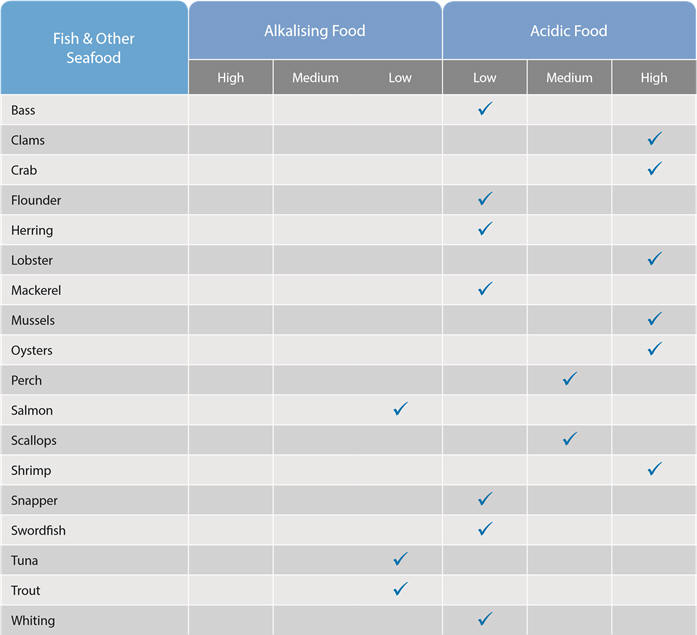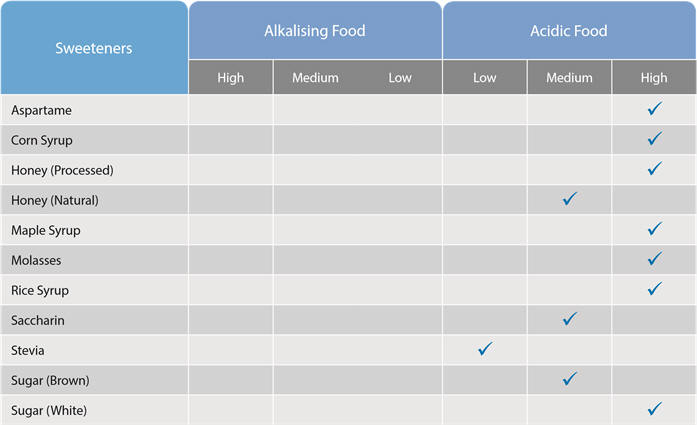FOOD CHARTS - Which foods have an acid or alkaline effect in the body?
General guidelines for balanced consumption of acid and alkaline foods
When foods are broken down in the body, they leave certain chemical /metallic residues (sometimes called a noncombustible “ash”), which when combined with body fluids, yield either acid or alkaline solutions
- Some foods yield acid solutions
- Some foods yield alkaline solutions
TWO methods are typically used to determine the acidity or alkalinity of a food:
1. PRAL value (Potential renal acid load) – determined by measuring the pH of the ash residue after a food is “burned”. This method does not accurately reflect whether the food is acid-forming or alkaline-forming in the body after consumption, since this method burns away two major determinant contents of a food, viz: sugar and yeast, which would otherwise sway the results in the acidic direction.
2. Effect on the body – based on the foundational work of researcher Robert Young, who strongly advocated a predominately alkaline diet for optimum health. He determined a list of foods as acid-forming or alkaline-forming using data collected from > 40,000 live blood analysis tests.
General factors of foods having an alkaline effect on the body:
- A food with 2 or 3 of these factors is likely alkaline:
- Freshness: nutrients intact, not made acidic through processing.
- Rich mineral Content: alkaline foods typically contain alkaline minerals, such as calcium, magnesium, potassium, sodium bicarbonate, manganese, iron.
- Low in Sugar: all forms. whether glucose, fructose, dextrose etc. are highly acid-forming in the body. Many fruits have a high fructose content and should be eaten in moderation.
- Vegetables: with few exceptions are mildy-to-very alkaline forming.
- High Water Content: high water content foods are generally more alkaline forming.
- Green: green foods contain alkaline-forming chlorophyll
- General factors of foods having a more acidic effect on the body
- A food with ANY of these factors is most likely acidic:
- Contains Sugar: sugar is the biggest contributor to a food’s acidity!
- Contains Yeast: similar to sugar, another big contributor to a food’s acidic effect
- Contains Dairy
- Contains Gluten: acidifying and causes inflammation
- Fermented: Miso, tempeh, apple cider vinegar, kombucha etc. are all acid forming
- Refined: processing, refining, cooking makes food more more likely to be acid forming.
Acid /Alkaline food charts
| Vegetables / Beans | Meat | Herbs /Spices |
| Fruit | Fish / Other seafood | Processed Foods |
| Nuts / Seeds | Milk, Dairy, Eggs | Bread /Other baked Goods |
| Grains/Cereals | Beverages | Sweeteners |
(Courtesy of: “The Definitive Acid & Alkaline Food Chart” by Ross Bridgeford of liveenergized.com)






























